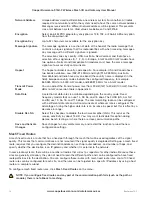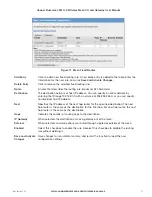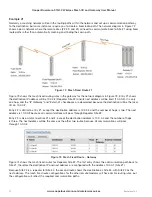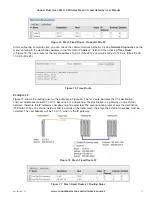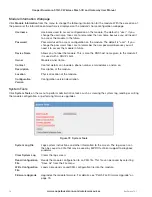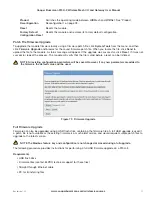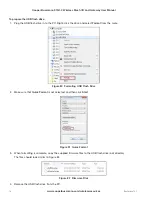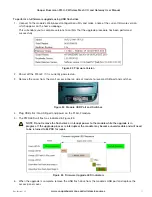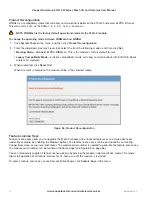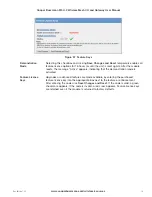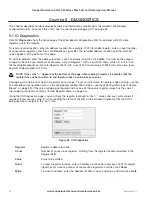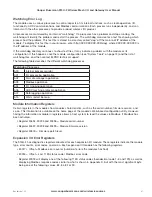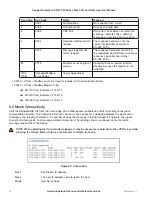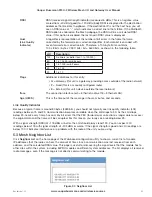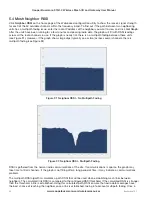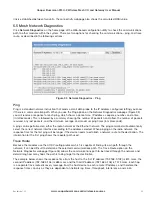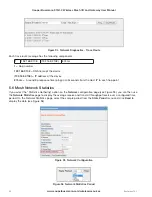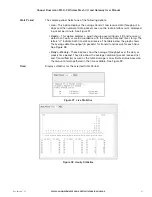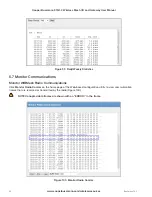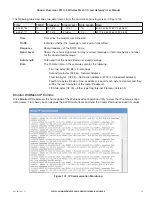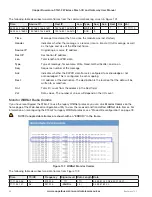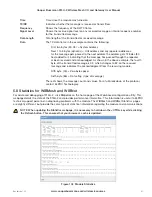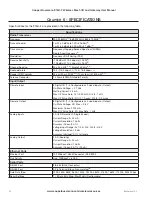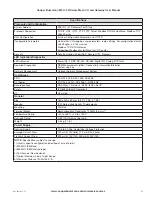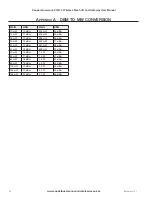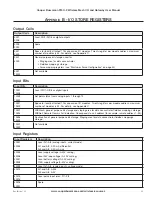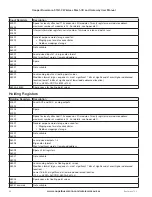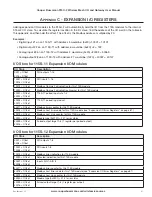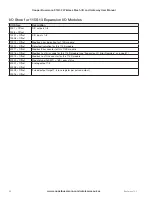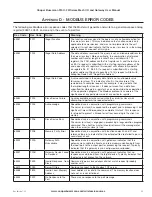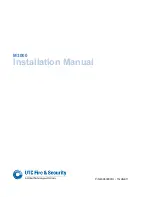
84
www.cooperbussmann.com/wirelessresources
Cooper Bussmann 915U-2 Wireless Mesh I/O and Gateway User Manual
Rev Version 1.2.2
5.4 Mesh Neighbor RSSI
Click
Neighbor RSSI
on the home page of the Web-based configuration utility to show the receive signal strength
for each of the 50 available channels within the frequency band. To find out if the path between two neighboring
units has a multipath fading issue, enter the radio IP address of the neighbor you want to view and click
Get Graph
.
After the units have been running for a few minutes and passing radio data, the graph will fill with RSSI readings
across all the radio channels in use. If the graph is nearly flat, there is no multipath fading between these units
(see Figure 91). However, if the graph shows large dips (typically one or two) across several channels, there is
multipath fading (see Figure 92).
Figure 91 Neighbor RSSI - No Multipath Fading
Figure 92 Neighbor RSSI - Multipath Fading
RSSI is gathered from the normal radio communications at the site. If communications is sparse, the graph may
take time to fill all channels. If the graph is not filling after a long period of time, it may indicate a communications
problem.
The multipath RSSI algorithm calculates a path RSSI that will be used when establishing mesh links between
neighbors. The calculated link RSSI is compared to the configured RSSI threshold. If the calculated RSSI is stronger
than the threshold, a link is established. Using this calculated path, RSSI ensures that radio data messages have
the best chance of reaching the neighbor once a link is established, taking into account multipath fading. Once a

